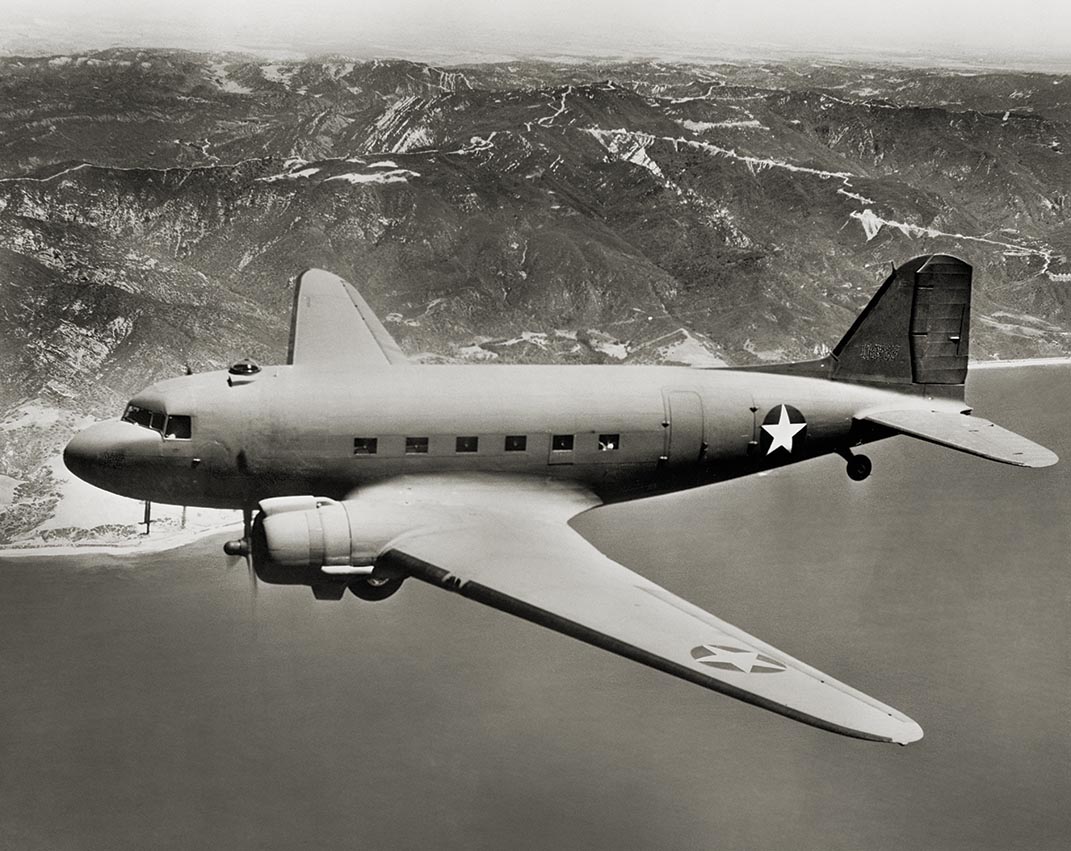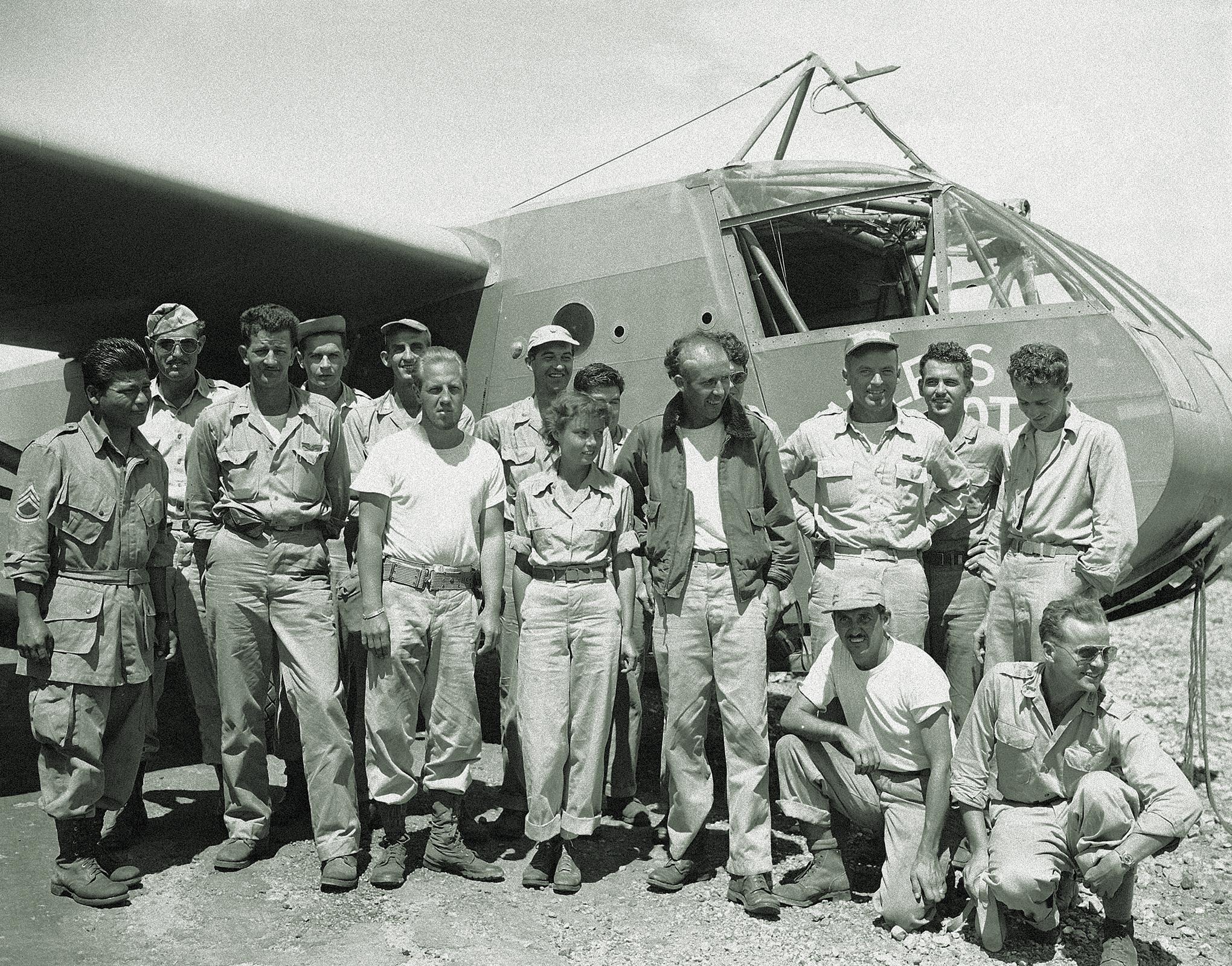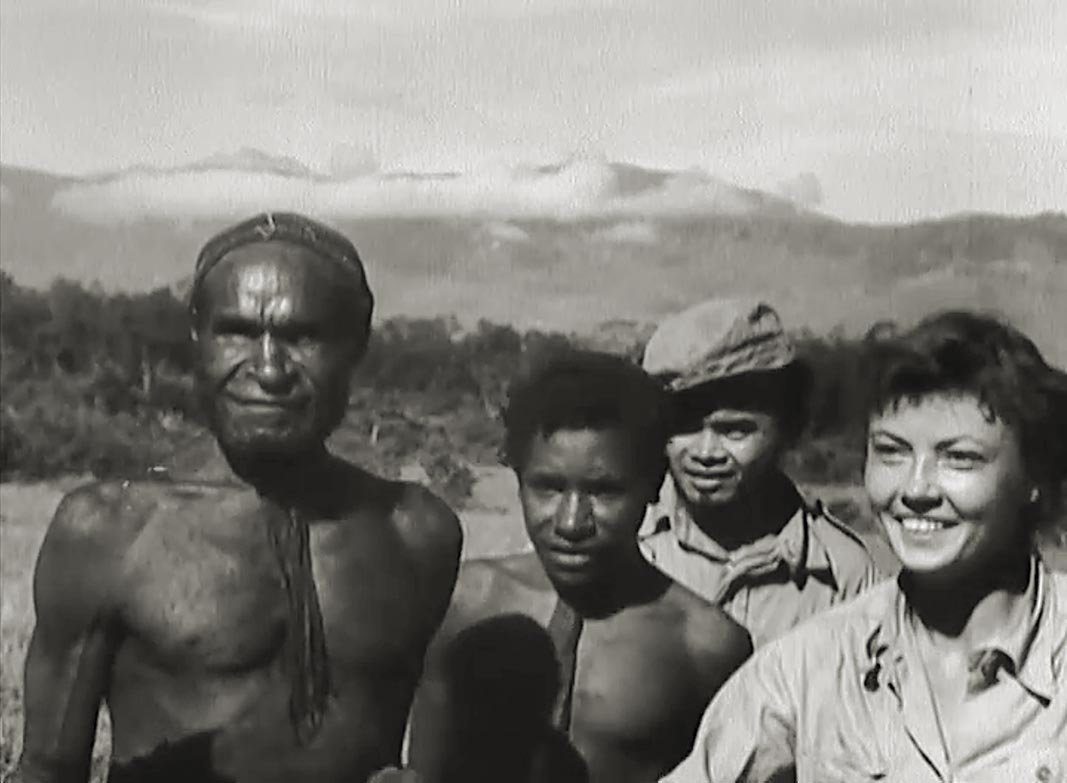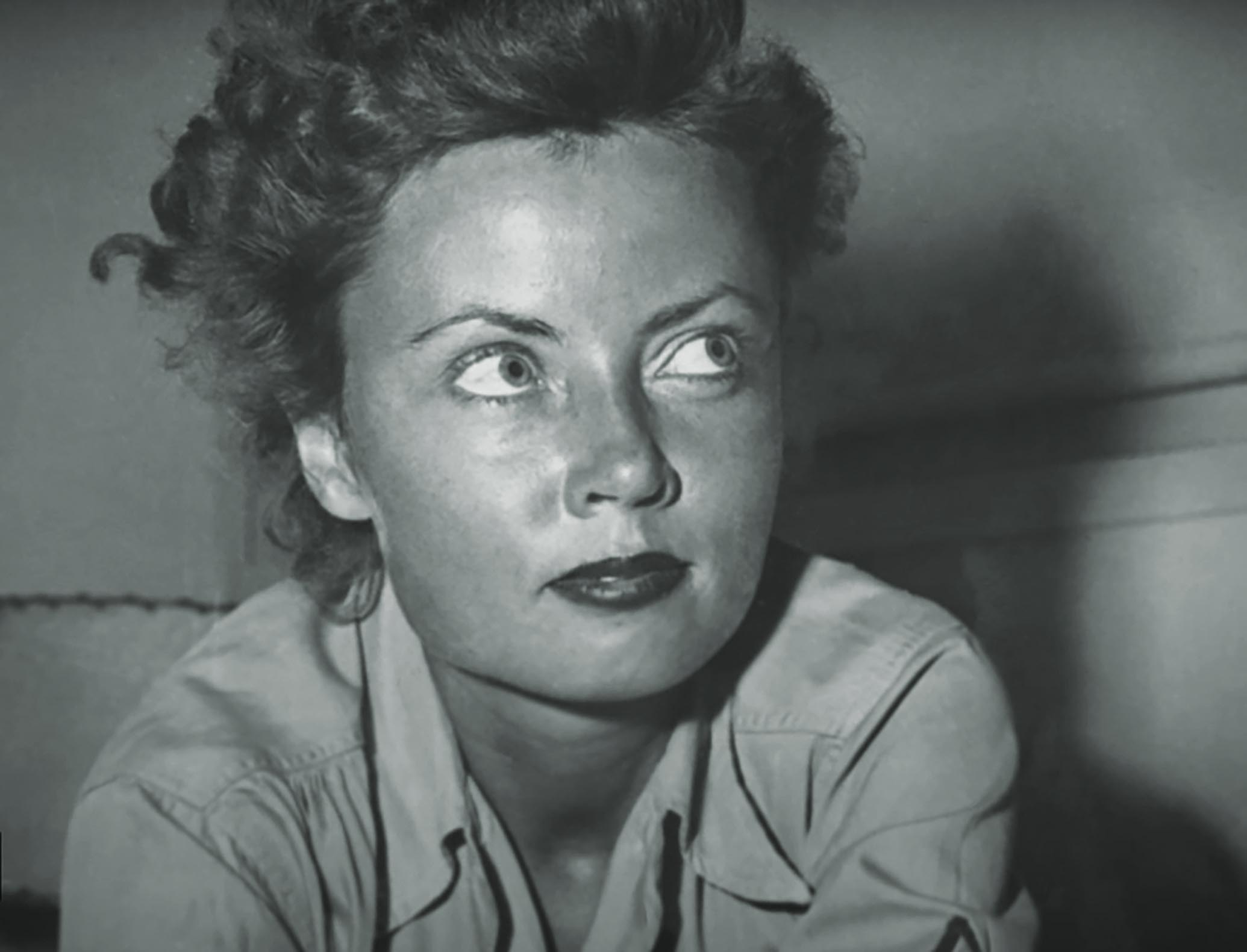Through most of World War II no one outside Margaret Hastings’ family and small circle of fellow soldiers knew her name, let alone the details of her life or service in uniform. All that changed dramatically after May 13, 1945, when a sightseeing flight aboard a U.S. Army Air Forces C-47 transport went horribly wrong, catapulting the diminutive corporal into stateside headlines amid a fight for survival in the jungles of New Guinea.
Born in northeastern Pennsylvania on Sept. 19, 1914, Margaret Julia “Maggie” Hastings grew up in Owego, N.Y., on the banks of the Susquehanna River south of the Finger Lakes. By all accounts she was a feisty tomboy with a rebellious streak that could get an otherwise “nice girl” into trouble. At the time of the 1941 Japanese attack on Pearl Harbor and the United States’ subsequent entry into World War II she was 27 years old, unmarried and working as an office secretary. In January 1944 she enlisted in the Women’s Army Corps (WAC) and spent most of the year in basic training, earning promotion to corporal.
That December Hastings shipped out with fellow WACs to New Guinea. She was 30, stood 5 feet 2 inches, weighed 100 pounds soaking wet and was pretty in a pouty sort of way that attracted suitors like honey draws bees. She was posted to the USAAF base in the port city of Hollandia, a former Japanese stronghold backed by jungle roughly midway along the north coast of the 1,560-mile-long island. She was among some 20 WACs doing secretarial work at the base. Though by that point in the war Hollandia was a backwater, the ranking WAC officer reportedly had been issued a pistol and instructed, in the event the Japanese overran them, to kill her sisters and herself rather than be captured.
The more than 350,000 American women who served in the U.S. military during the war were volunteers, as only men were subject to the draft. Over the course of the conflict women served in the WAC, in the Navy WAVES (Women Accepted for Volunteer Emergency Service), and in the Marine Corps and Coast Guard women’s reserves. WACs, WAVES and their sisters in the other branches served in such noncombat roles as nurses, secretaries, cooks, mail sorters, translators and drivers. They wore uniforms and held regular military ranks.
Women who entered the nation’s military services had to fight prejudice and the soft bigotry of Victorian ideals. When the WAC bill was being debated in Congress, one representative opposed to putting women in harm’s way lamented, “What has become of the manhood of America?” Another argument against allowing women to serve was a lingering aversion to women wearing male clothing. Not too many years had passed since a woman could be arrested for such an alleged affront to public decency. Women joining men at the front also had to fight scurrilous rumors they were sexually promiscuous, having enlisted only as a “geisha corps” to boost male morale.
Exhibit A in the case for women in uniform was U.S. Army Nurse Corps Capt. Maude C. Davidson, chief nurse of the Philippine Department at the outset of the war, who remained with her fellow caregivers and patients amid the Japanese invasion, even in the face of imminent capture. When Corregidor fell on May 6, 1942, the nurses were taken prisoner and spent the next three years in captivity. Nearly a half century after the war Davidson was posthumously awarded the Distinguished Service Medal for her leadership. Such women were why Gen. of the Army Douglas MacArthur called WACs “my best soldiers,” whom he insisted worked harder and complained less than men. MacArthur had plenty of opportunities to see women in action, as more than 5,000 of them served in the South Pacific. Only Margaret Hastings made headlines.

On Sunday, May 13, 1945, Col. Peter J. Prossen—maintenance chief of the USAAF’s Far East Air Service Command, headquartered in Hollandia—arranged for a group of personnel to take a Douglas C-47 Skytrain on a sightseeing flight southward over the island’s interior. Their turnaround point that Mother’s Day was a verdant vale (the present-day Baliem Valley) high in the Oranje Mountains (present-day Jayawijaya Mountains), which form the backbone of central New Guinea. A pilot on a reconnaissance flight in May 1944 had stumbled across the dale and dubbed it “Hidden Valley.” Surrounded by tall peaks, it is more than 30 miles long and 10 miles wide with a river meandering from end to end. Though it lay within 150 miles of Hollandia, no path into or out of the valley was visible from the air. But there were ample signs of human activity, as the valley was home to tens of thousands of Dani, spear-wielding hunter-gatherers living a Stone Age existence.
Explorers had made first contact with the Dani seven years earlier. Nevertheless, rumors persisted they were headhunters who practiced cannibalism and human sacrifice. The beauty and isolation of the valley fascinated every American who came to Hollandia, so much so that Army Air Forces pilots provided regular sightseeing tours. A couple of reporters who took one of those tours dubbed the valley “Shangri-la,” and the name stuck.
On the afternoon of May 13 two dozen Army personnel—including five crewmen and nine WACs—boarded the C-47. Nicknamed Gremlin Special and piloted by Prossen himself, the Skytrain took off in clear weather for what was officially termed “navigational training.” The aircraft was scheduled to return in time for Hastings to keep a date—a moonlight swim with Staff Sgt. Walter L. “Wally” Fleming of Lanse, Penn. They never got that swim.
By the time the C-47 reached the valley, clouds had closed in. Unable to determine his exact position, Prossen circled for a few minutes and then opted to descend. Given the weather and the surrounding terrain, it was a poor decision. Within moments of beginning the descent Gremlin Special slammed into the side of a mountain overlooking the valley floor. Nineteen of those aboard—including Prossen and his copilot, Maj. George H. Nicholson—died instantly. Despite burns and cuts on her legs Hastings was able to walk away from the wreckage, as were Lt. John S. McCollom and Staff Sgt. Kenneth W. Decker. McCollom had minor cuts and bruises, while Decker had an ugly head wound, a broken right arm and severe burns. From the wreckage the trio pulled two critically wounded WACs, Staff Sgt. Laura E. Besley and Pfc. Eleanor P. Hanna. Both died soon afterward from their injuries.
On his flight plan Prossen had listed his destination as Shangri-la but included no other details, which isn’t surprising for a sightseeing flight. Thus, though the Skytrain was reported missing that same day, searchers didn’t spot the wreckage until midday on May 16, nearly 72 hours after the crash. The Army initially embargoed news of the accident, which didn’t make it into stateside newspapers for nearly a month. Even then early reports were sketchy and laden with errors. For instance, some accounts referred to Decker as “Beckham,” and the extent of the survivors’ injuries was unknown. The B-17 search plane that found the wreckage reported there was no place to land, so follow-up planes dropped medical supplies, field rations, beer and a walkie-talkie. “We are all right,” said the trio in their first message. “Just keep sending us supplies.” Meanwhile, the Army worked to organize a rescue.
But first the pilots conducted funeral rites from 11,000 feet above the crash site, the survivors listening in over their walkie-talkie. The circling planes then dropped 20 wooden crosses and one Star of David with which to mark the resting places of the dead.
When word of the crash leaked out, the principal news services of the era, the Associated Press and the International News Service, respectively dispatched reporters Ralph Morton and Walter Simmons to the scene. They immediately latched onto the “Shangri-la” angle, and newspapers back in the States ran with it. Americans were familiar with the eponymous mythical hidden valley of James Hilton’s 1933 novel Lost Horizon and the 1937 Frank Capra film of the same name. This Shangri-la, however, was no utopian paradise in the Himalayas but an isolated valley amid inaccessible jungle, as remote from civilization as Mars. That left a blank slate for newspapermen to create their own mythology, equal parts Lost Horizon, Robinson Crusoe and Tarzan of the Apes.
They spun the story as an inspirational tale of heroism and human survival. Weary of reports of death and destruction on distant battlefields, Americans embraced the new Shangri-la. Dramatic reports from the scene described a valley populated by savage headhunters who, when not making war on each other, raised boars “as big as donkeys.” Reporters played up the human-interest angle, such as the fact that WAC crash victim Sgt. Belle G. Naimer’s fiancé, an USAAF lieutenant, had died in an earlier plane crash in Europe, and that John McCollom’s twin brother, Robert, was among those killed in the C-47 crash. The details didn’t matter as much as the story. Wire reports differed on whether it was cloud cover or a sudden downdraft that precipitated the crash, and whether the mountain was 17,000 or 13,000 feet high. But who was counting when there were supposed headhunters and a damsel in distress? In fact, the Dani were more curious than hostile and ultimately brought the survivors pork and sweet potatoes to supplement their C-rations. The rescue planes later dropped seashells for trade with the natives.
On May 26 two paratrooper medics from the U.S. Army’s 1st Filipino Regiment chuted in near the crash site to care for Hastings and her companions before leading them on a 10-mile trek down the mountain. Meanwhile, another eight paratroopers jumped in to establish a base camp in the valley, while relays of fighter aircraft reportedly circled overhead “to see that the natives behave.” The Army’s press releases focused on the alluring WAC, noting that crews of the rescue planes could hear her “clear, firm voice” over the walkie-talkie, assuring them, “I am fine and enjoying it all.” For its own reasons the Army portrayed the event as a great adventure rather than a senseless tragedy.
The rescue plan Army planners ultimately conceived was to land a Waco CG-4A glider on a landing strip carved out of the jungle, load survivors and paratroopers aboard, then yank the engineless aircraft back into the air. The latter feat would be accomplished by having a low-flying C-47 fitted with a dangling steel hook snatch the glider’s tow rope, which the rescuers would suspend above the ground by two poles. The transport’s grappling hook was attached to 1,000 feet of steel cable on a winch, which would further reduce shock loading. Until March 1945 the system had only been used to retrieve empty gliders, though a medevac mission conducted that month showed it could be done with a glider carrying human passengers. Getting wind of the operation, Canadian adventurer Alexander Cann parachuted into the valley with a film camera to document the rescue on behalf of the Netherlands Indies Information Service; his 12-minute documentary, Rescue From Shangri-la, is viewable on YouTube.com.

For obvious reasons the Army did not plan to release the news to the public until after the attempt. The challenge of carving out a landing strip suitable for a glider was left to an American officer on the ground with labor provided by the Filipino paratroopers and friendly Dani. They completed that part of the operation in record time. On June 28 Hastings, McCollum, Decker and the two paratrooper medics took their seats in a CG-4A piloted by Lt. Henry Palmer that had landed on the rough strip just 30 minutes earlier. Moments later a low-flying C-47 of the 374th Troop Carrier Group snatched the glider into the air, then climbed rapidly to 12,000 feet to clear the surrounding peaks. The nerve-wracking trip back to Hollandia took an hour and 20 minutes. A cheering throng was waiting on the airstrip to welcome the three survivors, who had been stranded for 47 days. One of the most daring rescue missions of World War II was over. Miraculously, no casualties had been incurred.
In the aftermath of the rescue the media focused most their attention on Hastings, whose story had gripped Americans for weeks. Initial news reports said she looked “extraordinarily fit” after the ordeal. “Her hazel eyes sparkled…[and] her face was tanned,” noted one report, making it sound like Hastings had returned from a beach vacation rather than a month and a half in the jungle. “Brushing back her windblown locks,” the dispatch continued, she offered this jaunty quote: “I’m sure glad to be back. Hollandia never looked better.” A little later she appeared at a press conference with “a fresh hairdo, new clothes and bright-red nail polish,” seemingly none the worse for wear. One newspaper heralded Hastings as “the most celebrated young woman of the war.” Another turned her into a pinup girl: “She’s blonde. She’s cute. She’s the No. 1 Adventure Girl in World War II.”
The Army doctored the details of the crash to make the story less embarrassing. A press release dubbed the fatal joyride an “orientation” flight and emphasized the survivors had tried to nurse others only to watch them tragically die of their wounds. Such snippets were word games at best, flat-out lies at worst. But in the interest of home front morale, the military had no problem treating the truth as malleable. Army spokesmen who before the rescue had vilified the Dani as “headhunters” turned to calling them “very happy people,” though they allegedly lived in “absolute filth.” They were so friendly and apparently conversant with Western greetings that on approaching the survivors their leader had “stuck out his hand to shake.” A rumor circulated the Dani had wanted to make Hastings “queen of the valley.” When one snarky reporter asked her, “Would you like to have remained as queen of the valley?” she reportedly answered no “with a twinkle in her eye.” Finally, an Army spokesman was compelled to assure the American people that “no romantic attachments were formed” in Shangri-la, noting that Hastings wore a school class ring on her engagement finger, and McCollom had a girl back in Dayton, Ohio.
Neither the Army nor the press wanted the uplifting story to end the minute the survivors made it home. After granting them extended furloughs, the Army sent the trio around the country for seven weeks on the war’s last Liberty bond tour. Hastings eventually grew tired of repeating her story, later admitting, “I wasn’t as nice as I should have been to a lot of people.” The Army also sprang for an all-expenses-paid trip to New York City, where she was photographed attending Mass at St. Patrick’s Cathedral while awaiting her “boyfriend,” Staff Sgt. Wally Fleming of moonlight swim fame. The Army also flew him to New York and gave the couple a night out on the town. It was a romance cooked up entirely by the Army; the couple had never been serious.

In the summer of 1945, as crowds in Allied nations worldwide basked in the afterglow of the victory in Europe and the Battle of Okinawa raged, the feel-good Shangri-la rescue story shared the headlines. Hastings was America’s sweetheart and the Army’s million-dollar bond baby. In July attention would shift to President Harry S. Truman’s attendance at the Potsdam Conference, in August to the atomic bombings of Hiroshima and Nagasaki, and in September to V-J Day. But for a few weeks that June readers nationwide scrambled to find New Guinea on their maps and re-read Hilton’s Lost Horizon as they thrilled to the story of the brave little WAC who’d been marooned in the jungle and brought home safely.
After being mustered out of the Army in December 1945, Hastings returned home to Owego. For months afterward strangers stopped her on the street to ask for an autograph, a photograph or both. By July 1946 she was still decompressing, living with her widowed father, when This Week magazine came calling. When the interviewer pressed about her marital plans, Hastings, in a shocking burst of candor, said, “I’m not sure I go for the kind of man who’s supposed to make a good husband.” Just home from the war, she wanted only to attend Syracuse University on the G.I. Bill and perhaps join a sorority.
When those plans didn’t pan out, Hastings took a job as a hotel secretary in New York City, where she finally met her future husband, insurance salesman Robert C. Atkinson. They wed quietly on June 24, 1949. Three years later Mrs. Atkinson—who remained, if not a celebrity, at least an object of curiosity—was invited onto Ralph Edwards’ new NBC TV show This Is Your Life. In the preshow rehashing of her story a creative screenwriter had natives throwing spears at the C-47 as it came down and the survivors spending 46 days in an “island paradise.” The actual story did not get the in-depth treatment it deserved for decades. In 1997 retired Army Air Forces Col. Edward T. Imparato, a former commander of the 374th Troop Carrier Group, concisely related the operation in his book Rescue From Shangri-la, while Mitchell Zuckoff’s 2011 New York Times best seller Lost in Shangri-la fully dispelled the Army propaganda and newspaper myth that had shrouded accounts of the crash and rescue.
Hollywood never latched onto the story. The glut of war stories offered up after 1945 likely dampened any enthusiasm, and when the starring heroine herself showed no interest in a B-movie treatment, the limelight shifted to more willing subjects. Perhaps in the era of female empowerment the tale will finally merit big-screen treatment. Behind the scenes the Army didn’t forget the incident that had brought the corporal notoriety. In 1958 a team from the American Graves Registration Service finally recovered the remains of the 21 victims buried at the crash site in 1945. They were reinterred the following summer at Jefferson Barracks National Cemetery south of St. Louis. As for the “Queen of Shangri-la,” Margaret (née Hastings) Atkinson raised a son and daughter, later divorced, continued to work as an admin for the Air Force and died at age 64 on Nov. 24, 1978. MH
Richard Selcer is a Texas-based author and history professor who has published 13 books and taught for more than 40 years. He gleaned much of Hastings’ story from period newspapers. For further reading Selcer recommends Lost in Shangri-la: A True Story of Survival, Adventure and the Most Incredible Rescue Mission of World War II, by Mitchell Zuckoff, and Rescue From Shangri-la, by Col. Edward T. Imparato.





